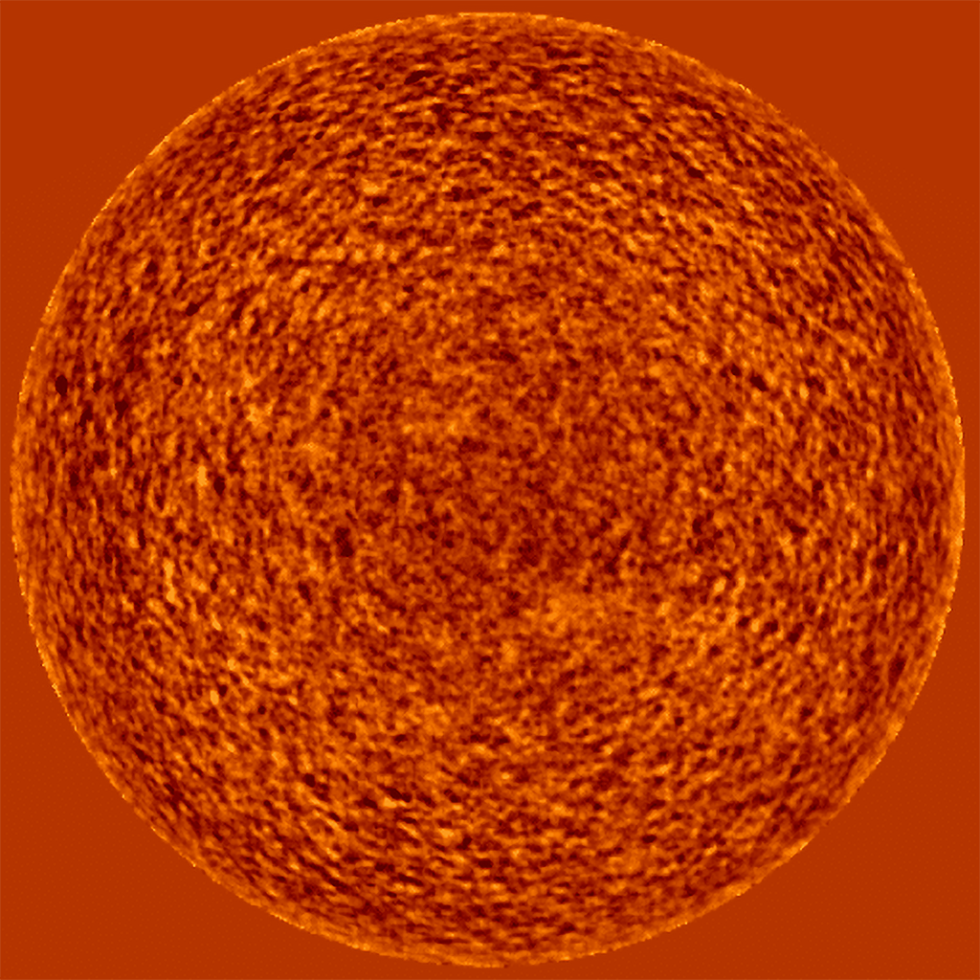Unraveling Solar Symphony: Quasi-Biennial Oscillations Dance to Their Own Beat in Cycles 23 and 24

In the intricate dance of solar activity, a new study led by solar physicist Kiran Jain at the National Science Foundation’s (NSF) National Solar Observatory (NSO) has unveiled the captivating rhythms of Quasi-Biennial Oscillations (QBOs), shedding light on their elusive nature, and the symphony of periodicities within the Sun. Dr. Jain and her collaborators, Partha Chowdhury and Sushanta C. Tripathy, unraveled the nuanced variations in QBOs by using acoustic mode oscillation frequencies from NSF’s Global Oscillation Network Group (GONG) spanning over 25 years—delving into the heart of solar cycles 23 and 24.
GONG & Solar Cycles
GONG is a community-based program which conducts a detailed study of solar internal structure and dynamics using helioseismology by means of a six-station network of extremely sensitive, and stable velocity imagers located around the Earth to obtain nearly continuous observations of the Sun’s “five-minute” oscillations, or pulsations. The network has been operational since 1995. Initially designed for three years, GONG has operated for almost three decades. Its replacement with a next-generation GONG network is pressing. NSO, in collaboration with Space Weather partners, continues to consolidate a concept for ngGONG that incorporates the extensive knowledge we have gained about how the Sun and the Earth are magnetically connected.
The solar cycle, alternatively referred to as the solar magnetic activity cycle, sunspot cycle, or Schwabe cycle, is a roughly recurring 11-year pattern in the Sun’s behavior. This pattern is gauged by changes in the number of observable sunspots on the Sun’s surface. Throughout the duration of a solar cycle, various aspects of solar activity undergo a coordinated fluctuation—e.g., solar radiation levels, the release of solar material, and the quantity and size of sunspots, solar flares, and coronal loops. The cycle progresses from a phase of minimal activity, through a phase of heightened activity, to then returns to a phase of minimal activity. We have recorded solar cycles since solar cycle 1 that began in February 1755 and it ended in June 1766. Currently, we are in solar cycle 25.
In addition to the 11-year pattern, other periods have also been identified in both solar activity proxies and helioseismic data obtained from different instruments—including shorter QBOs with periods ranging from 7 months to 4 years.
GONG and the study of QBOs
The study at hand reveals that QBO-like signals pervade both solar cycles but with distinct periods. In cycle 23, the dominant QBO period pulses at approximately 2 years, while in cycle 24, the rhythm extends to a 3-year beat. Strikingly, these quasi-biennial oscillatory signals in cycle 23 only thrive during the ascending and high-activity phases, diminishing swiftly around 2005 during the declining phase. In contrast, cycle 24 experiences a continuous QBO presence throughout from 2009 to 2017.
Because changes in the solar interior strongly influence helioseismic oscillation frequencies, the fact that QBO-like periodicities detected in solar activity and the oscillation data are more or less consistent implies that surface activity measurements mainly mirror the characteristics of the solar interior. However, surface activity measurements lack the precision to determine the exact origin of QBOs while helioseismic measurements, such as those provided by GONG, possess a distinctive ability to identify the source location.
GONG has played a unique role so far by capturing comprehensive full-disk images of the Sun since 1995. Having reliable data that covers multiple data cycles of solar activity—beyond the two from this study—would only increase our ability to decipher the complex nature of the solar dynamo below the solar surface. Future projects akin to GONG hold the key to this.
